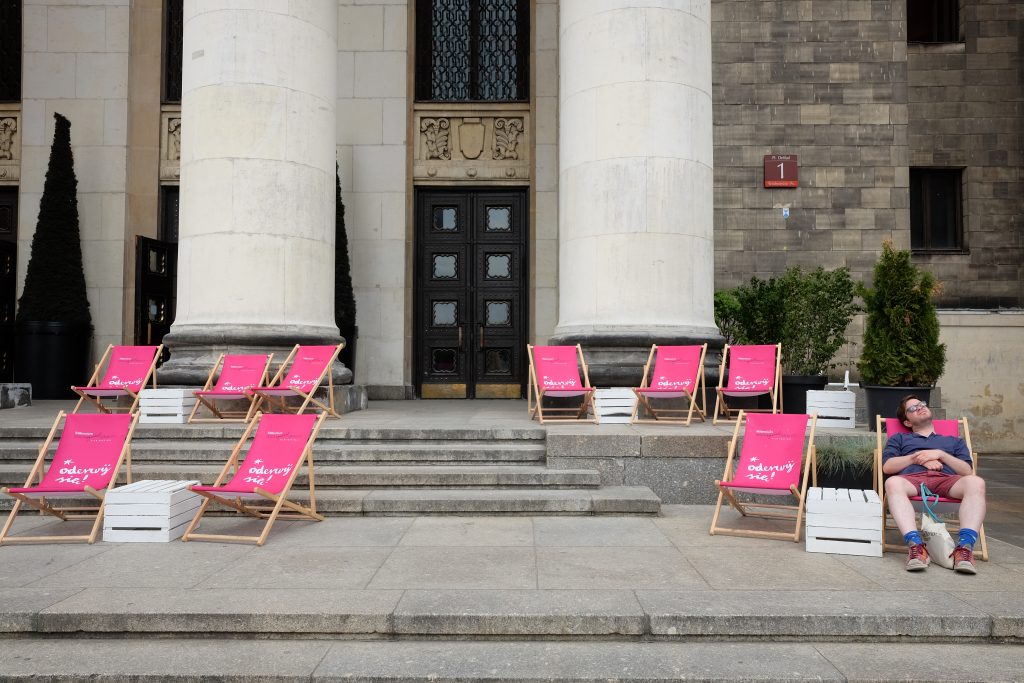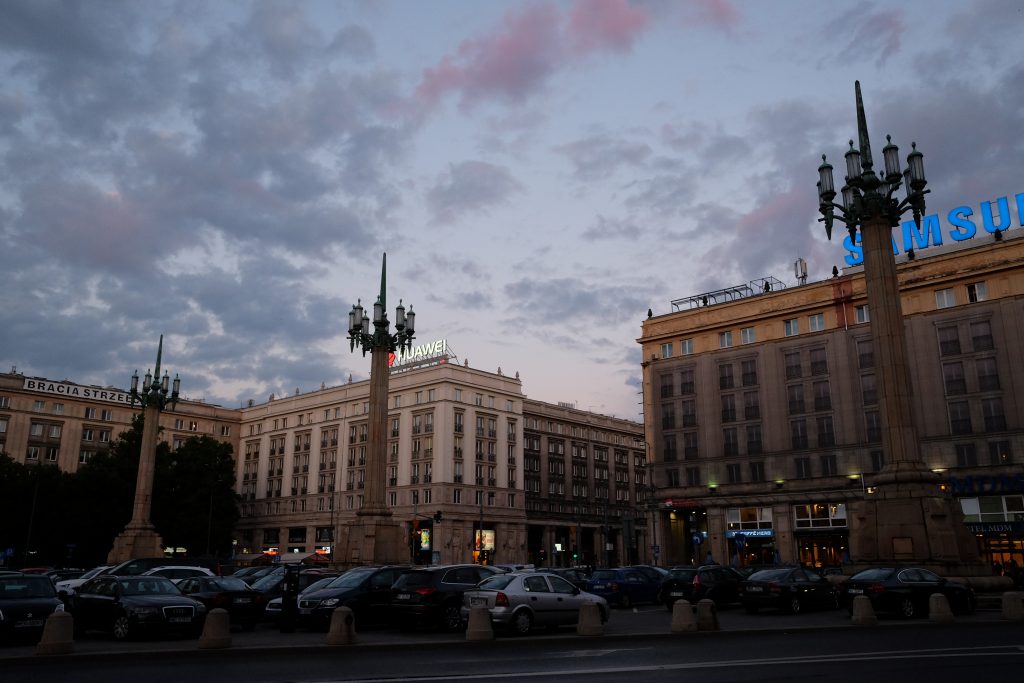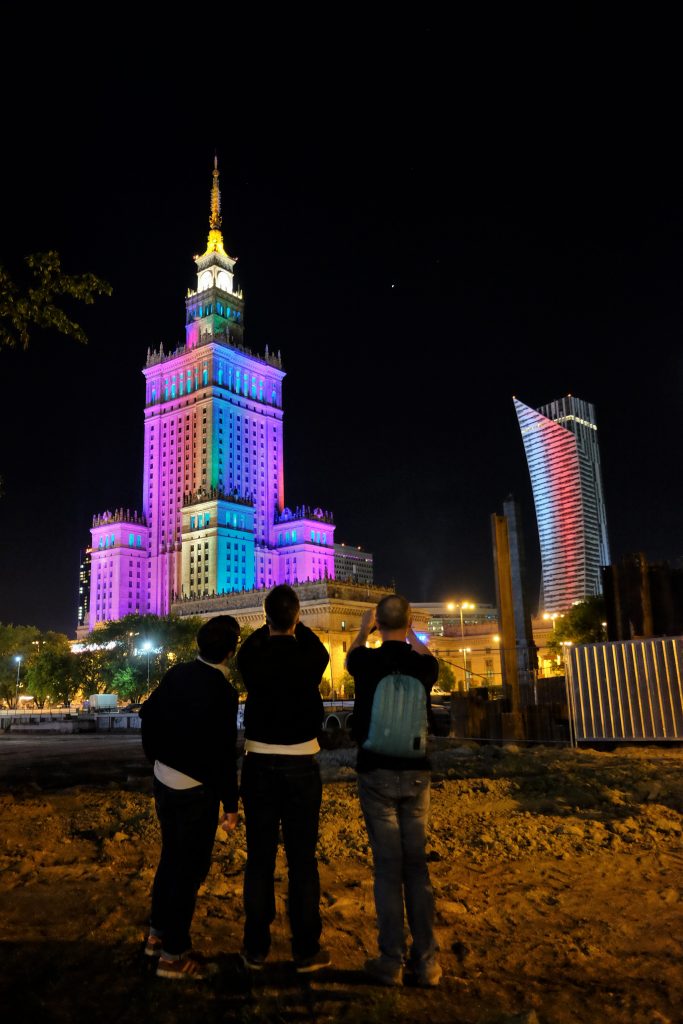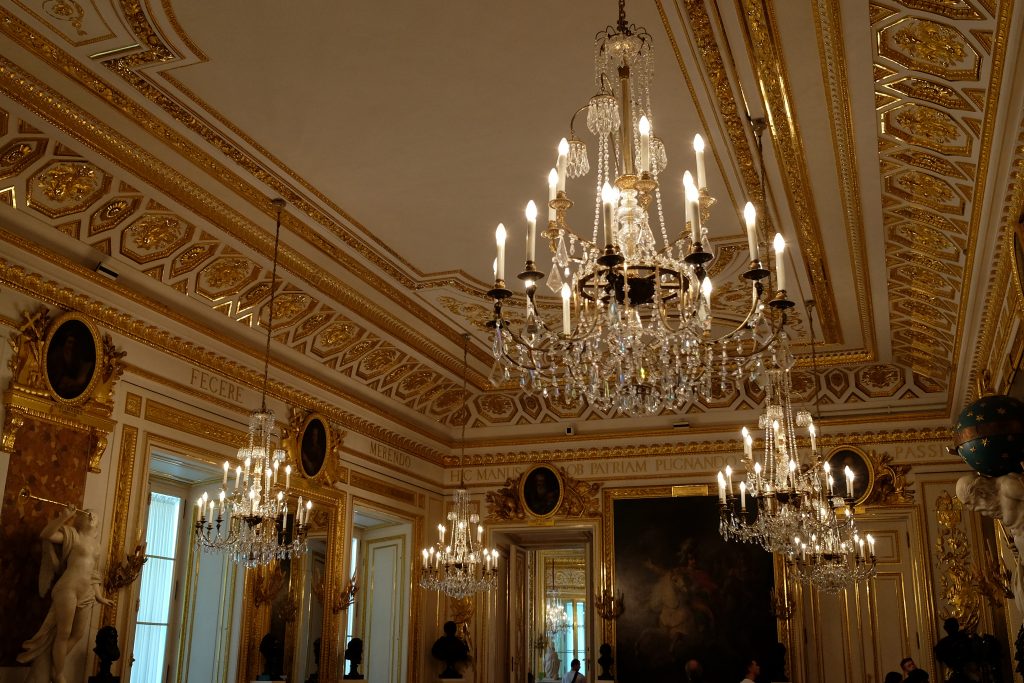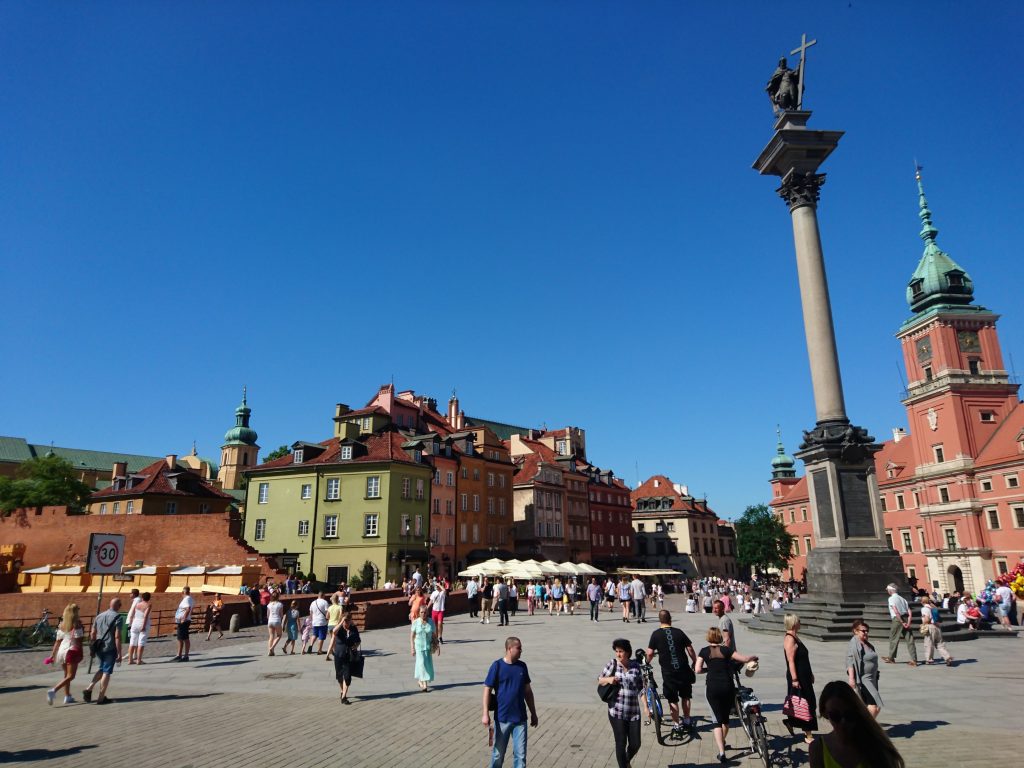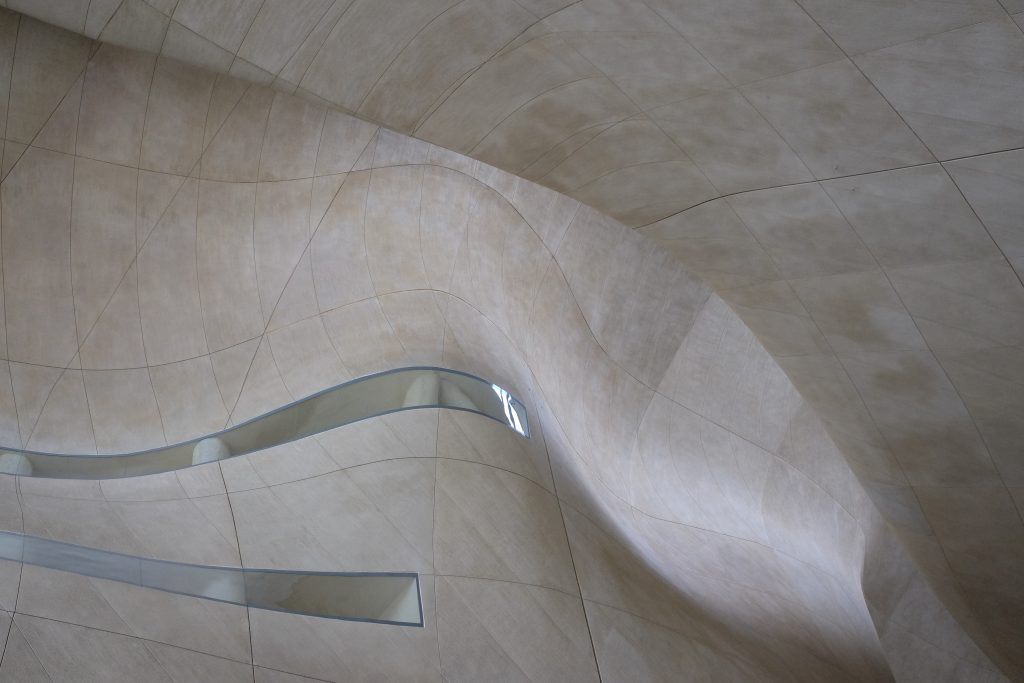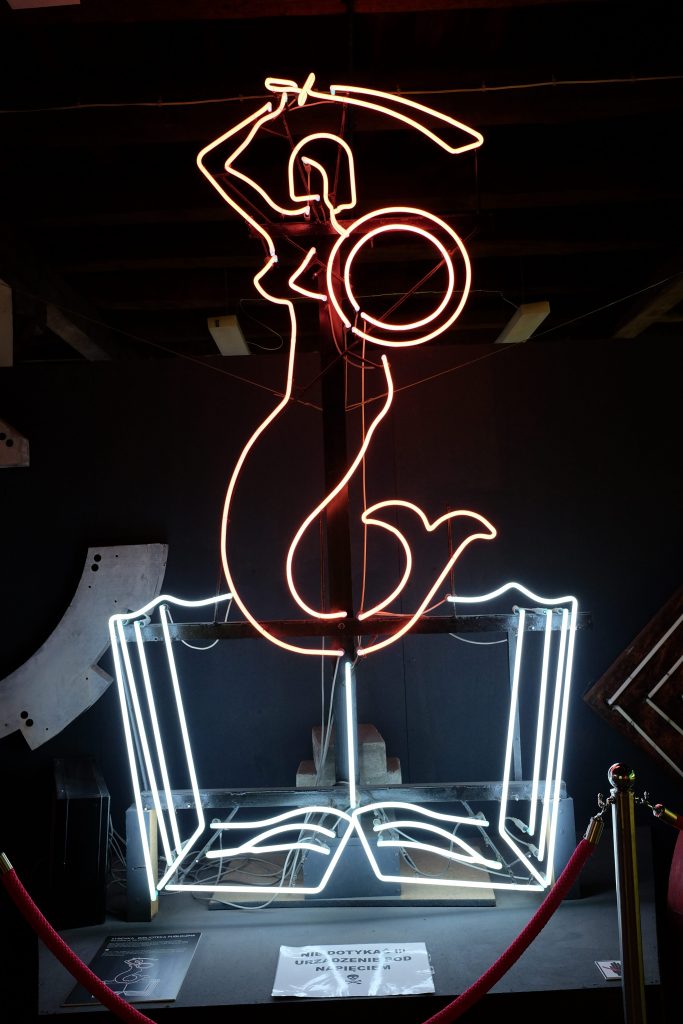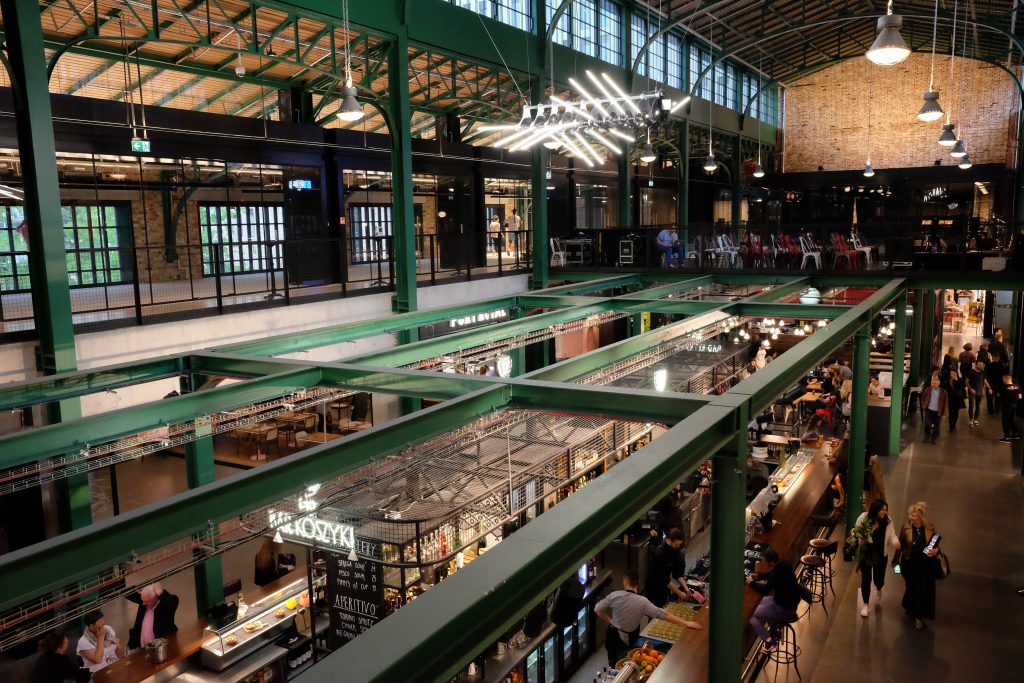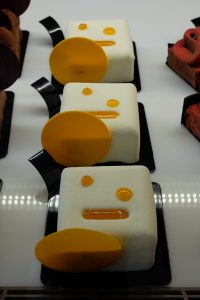Here’s a fact that will make you a pub quiz hero. The population of Warsaw before the second world war was 1.3m people. At the start of the Warsaw uprising, in August 1944, 900,000 remained. In 1945, once the uprising had failed and the Germans had finished their systematic destruction of the city, 1000 people remained and Warsaw was dead.
Human spirit is an incredible thing, because the Warsaw of 2017 is a vibrant, modern city boasting the newest old town in the world and an atmosphere far removed from what you may read in the press about a far-right lunatic government. Oh, that Government, let me count the ways… The environment minister Jan Szyszko said that “human development is not detrimental to the environment” and thought it would be a good idea to allow logging in the primeval Białowieża forest. He somehow squares the destruction of Poland’s wildest spaces with something he completely misread in the bible. He’s an idiot.
Back to human spirit, which Warsaw has plenty of. It’s an underrated city absolutely worth a visit. In a region with the opulence of Vienna, the old town charm of Bratislava, the beauty and stag-dos of Prague and Budapest, Warsaw has had to go back to the drawing board on what it can offer as a city. It has a wealth of history, a history so violent and shocking that much of my long weekend there was taken up in museums, mouth agape at the sheer horrors that Warsaw and Poland has gone through. But, modern Warsaw also has some great attractions for hipster living, and just general fun times. I left Warsaw feeling it struck a note between Stockholm and Berlin, with a mixture of beauty, gritty realism, a lust for life and sitting on deckchairs. Deckchairs were everywhere; outside the front of the Palace of Culture and Industry, up on the viewing platform of the Palace of Culture and Industry, outside the Neon museum, along the river and many places in between.
Warsaw is a messy bedroom when it comes to architectural styles, there’s a bit of everything scattered around. From the Stalinist wonder of the Palace of Culture and Science, where a New York skyscraper may well have flown into the centre of the city, to the other major communist gem, Constitution Square, Warsaw announces itself as somewhere important. Constitution square is a slice of socialist realist architecture that really captures a moment in time, when the Soviet Union could do anything in its imagination, if not in reality. The square is surrounded by grand blocks that gracefully echo the strengths of the union, sculptures of heroic workers adorn the sides of buildings in a celebration of soviet myth. An updated version might show a bored woman giving you change at a supermarket, but it would somehow lack the power required to carry everyone forward into the light. On the square are three glorious oversized lamps that add a touch of brute elegance. This architecture of power is always fascinating to see, and there’s some irony in the enormous Samsung illuminated logo on the top of one of the buildings, bringing brazen capitalism into view. The square and immediate surrounding remind me of Karl-Marx Allee in Berlin, but more glitzy.
If I was to think of glitz and Warsaw, I would be drawn to the biggest building in the country, the eighth biggest building in the EU and a testament to the ways the USSR would wield their power. The Palace of Culture and Industry. Back in 1950’s Warsaw, Stalin was keen to offer Poland a gift. With Warsaw in ruins, you might think a hospital, a university or even somewhere for people to sleep might be a good gift, but as our tour guide said, when Stalin asks if you want something, there is only one answer. It was constructed in three years and in making it, 16 people died, which we were told was pretty good going for the 1950s. A sobering thought for the pointless 2022 Qatar world cup is that over 1,200 have died to make their vanity project. The rush to build the Palace was intense, and construction went on 24 hours a day, 7 days a week. A benefit of having no neighbours, I suppose. It is, I’m sure, a symbol of the evil of Stalin but the Palace is a marvel and we had a commanding view of it from our rooms in the Intercontinental hotel. Never having to live through communism, I can appreciate the structure, without having to worry about the morals of it.
The building today is a genuine people’s palace, unlike in the days of Stalin where only members of the communist party could attend events, by invitation. It is rumoured that new year’s parties here went on for four days. Keeping that spirit of booziness alive, in 2012, I heard that Roman Abramovich hired a hall in the Palace for Euro 2012 and turned it into a strip club. Today it holds a cinema, four theatres, two museums, a bookshop, a swimming pool and a viewing platform on the 30th floor. You can also go on fascinating guided tours of the building, some taking you down to the basement to see the antiquated machinery and up to the viewing platform.
The history of Warsaw’s near-total destruction is covered in forensic detailed in the Warsaw Rising museum. By January 1945, 85% of Warsaw’s buildings were destroyed, with an estimated 40% of the city levelled by the Germans once the uprising was over, with the population gone aside from a thousand people hiding in the rubble. Germans went around the city with flamethrowers and explosives to gut every building they could, focusing on anything of historical value or national pride, with the aim of reducing Warsaw to nothing more than a military transit point. The biggest building in the old town is the Royal Palace, which Hitler wanted destroyed as early as 1939. During the war, the Nazis conducted aerial bombardments of the palace, removed precious artefacts, tore off the roofing to quicken the building’s demise and in 1944 they spent six days blowing it up. All that remained was two small fragments of wall. Today it stands as the focal point of the reconstructed city and is an attraction worth visiting to understand the history of the building, a fascinating microcosm of Poland’s ups and downs over hundreds of years. One room, the Knight’s Hall, was removed and transported to Russia in 1832 and returned to Poland in 1922. It survived the onslaught of 1939, was removed again by the Germans and only returned to the castle in 1984. This is just one of many original fragments of the Royal Palace that through chance, brave Polish workers spiriting away contents in secrecy and the evil efficiency of the Nazis, managed to survive. The Knight’s Hall is a true gem, with a glorious wooden floor, busts, opulent chandeliers and more.
Similarly, the Conference Room survived by workers managing to remove many features of the room in 1939, including a chimney piece, wall murals, portraits and even a floor made from thirteen types of wood. In our minds, perhaps a war seems very immediate, but history shows it to be something very different, where people don’t flee their cities but do their best to stall the senseless damage.
The reconstruction of pre-war Warsaw was partly down to the work of Canaletto, who was commissioned to paint twenty-two street scenes of Warsaw. These paintings, like much in the city, was first nabbed by the Russians, then by the Germans, and they somehow all survived the turmoil, now sitting in one place in the Royal Castle. We visited the Castle on a Sunday, when it is free to visitors.
The old town is so remarkable, it’s hard to take it all in. You see what looks like a fairly standard eastern European old town; buildings painted many beautiful shades of green, peach, yellow, crooked rooflines, enchanting views from all angles. But it’s all of 60 years old, if that. The reconstruction of the city is a glorious act of defiance that stands at odds with how Britain rebuilt after the war, in a festival of concrete and ring roads.
The Museum of the History of Polish Jews is a spectacular building, designed by Finnish architects and every bit as adventurous as that would suggest; the exterior is relatively square in shape making the interior’s grand curved entrance even more startling. The building opens up to represent a parting of the seas and is lit from above allowing shadows and shapes to dance over the sprayed-concrete interior. Shapes are everywhere, from the spiral staircases to the slanted doorways. The main exhibition space is below ground and traces the history of the Jews in Poland since the middle ages and it would be fair to say that squabbles and power play have been a constant between the Jews and the Polish, with both sides enacting petty rules against the other whenever it suits. As we travel through history and edge towards the Holocaust, the space feels more oppressive as you get closer to the second world war and the tone is more frantic as history takes one of its bleakest turns. It is important to note that the Holocaust is just one aspect of the museum and the story ends in the modern world, reminding us that Jewish history did not end in the 1940s.
A much smaller museum is the Museum of Life under Communism, which squeezes hundreds of artefacts, photos and tat into a few rooms that imitate a home in communist times. A cheesy record plays on an old record player, with the staff coming along to start it up again. Every room has information in English to tell you about the great time-saving abilities of the commie kitchen – stuff that Westerners will probably look at half in interest and half in amusement, but across the homes of many millions of people would be the same sort of products and the museum is a great time capsule. The house was stacked with Zenit cameras with old film stock, cleaning equipment called Prozek and Wedel Chocolate. Wedel is an interesting company; in the war, the company refused to collaborate with the Nazis and so they were persecuted, with their factory being destroyed in the uprising. Afterwards, the company made attempts to get back on its feet when the communists nationalised it. Since then, it’s been owned by a bunch of global names and now one of Poland’s best- known brands is owned by a Japanese-Korean conglomerate. A history lesson in a bite of chocolate.
A few minutes’ walk more and you’ll find the Neon museum, a celebration of liquefied air that when illuminated, makes everything look immediately cooler. Discovered by Brits, but finessed by the Polish, the neon museum has a heap of Warsaw’s old neon signs that adorned the buildings of the city during the Cold War. Some of the pieces include depictions of bikes zooming off, milkshakes, flowers bursting with colour and the symbol of Warsaw, a Mermaid. The museum also restores iconic neon in their original locations, and it looks like the museum’s work has made Warsaw reminisce for the illumination of old because the city crackles with the sound of neon on many shopfronts.
If the weather’s good, head to the University of Warsaw garden, a huge green space around the university and on top of it. The gardens are separated into two sections; the lower gardens with a pond, many spaces to sit and sculptures by Ryszard Stryjecki. The upper garden is even more impressive as it covers the roof of the university building, with four areas full of paths and differing plants and trees. The views of the riverside and the city centre are remarkable, with clusters of skyscrapers here and there and the familiar outline of the Palace of Culture and Industry dominating.
In the breaks between history and culture, a drink is always welcome and you can’t go wrong if you head to the bars of Pawilony, the cluster of little bars tucked away behind a gate at 22 Nowy Świat. Despite it not being announced by any signs, beyond the gate is pivo enough for everyone. The atmosphere is relaxed yet busy, the clientele a mix of young and older and choosing somewhere to go is really just a lucky dip. As we left the bars, a stag-do came along, singing their songs of fighting and so on. Actually, we had no idea what they were singing but the guttural chanting didn’t sound sweet in nature.
For food, Warsaw packs so much on your plate that you’re going to need elasticated trousers for a few weeks afterwards but it’ll be worth it. A new food outlet is Hala Koszyki, a gorgeously renovated market hall transformed into a grand food hall with tiny bistros nuzzling up to food stands and restaurants. Finding a table was hard to do, so you might find that you eat wherever you can, rather than where you want. Spend some time here checking out the lighting which is an artwork in itself. Just looking around the market is entertainment enough. We had a great brunch at Sam, which sprung up in 2012 and has a deli, bakery, bar, and food through the day. They bring you many, many menus that offer you all sorts of food options, so you can even bring along your fussiest. I’ve noticed this in Poland; some menus will have little arrows telling you that chia seeds are “blah blah good for you” and the omega 3 is “blah blah whatever it does” and that the meat is from some special Polish place with the eggs being from blessed chickens. Menus are turning into little booklets on nutrition and I swear it worked its magic on me when I ordered Shakshuka, which is full of “blah blah all good eggy things”.
We had dinner at Stary Dom, inside an unprepossessing façade a tram ride outside town. The interior is high on rustic charms, with a wooden vaulted ceiling, lots of pictures of old people and generous sized tables with room for all the food and drink you’ll order. It’s genuinely nice to go to a restaurant and have space. It’s not all that fun doing Tetris with your pierogi. Our waiter had a good sense of humour and coerced us into downing shots of the strongest vodka known to man. Clever man. To balance out new Warsaw and old Warsaw, we visited a milk bar. For the uninitiated, a milk bar is a communist-era cheap cafeteria serving up dairy-based food, so expect mashed potato with everything. We visited Bar Sady, where the interior seems little changed from communist times and it’s all the better for it. The extensive menu offers Polish staples like soup, meat and veg with sides of cabbage. I had a mushroom soup with pasta in it, breaded chicken cutlet with potato and red cabbage. The entire meal with a soft drink cost under £5.
Warsaw has many great bakeries, it’s almost guaranteed you’ll stumble over one but here are my highlights. For pastry needs, there’s Vincent where I had an orange croissant. For beautifully structured cakes you can head to Lukullus or Odette but be warned that you’ll not want to eat it because it’s like a work of art. Then you’ll eat it and just buy more.
I went to Warsaw expecting something altogether more grim; after all, I was told it was an “interesting” city with rough edges. Seeing Warsaw in excellent spring weather was a genuine delight. The city might not appeal to those looking for something like Prague, but it has a real depth of character that gives the city a sparky personality. Resilience turned Warsaw from a charred wreck into what it is today, and that’s a thoroughly enjoyable destination I’ll want to visit again.
Many of the photos courtesy of my friend Rokos who has an eye for detail and a head full of 80s pop tunes.

